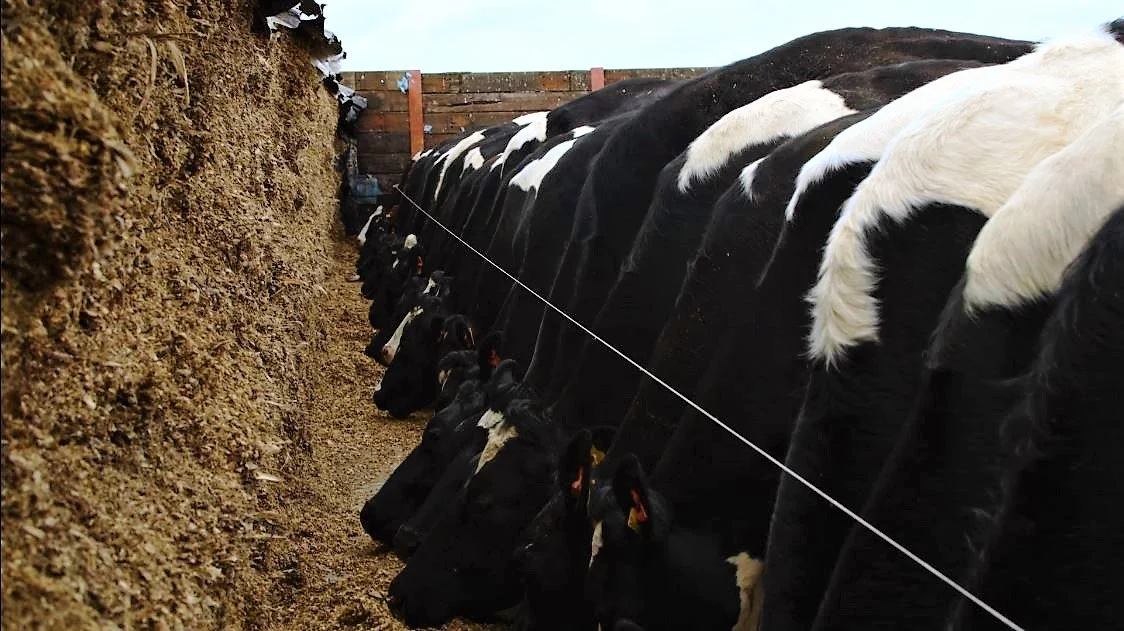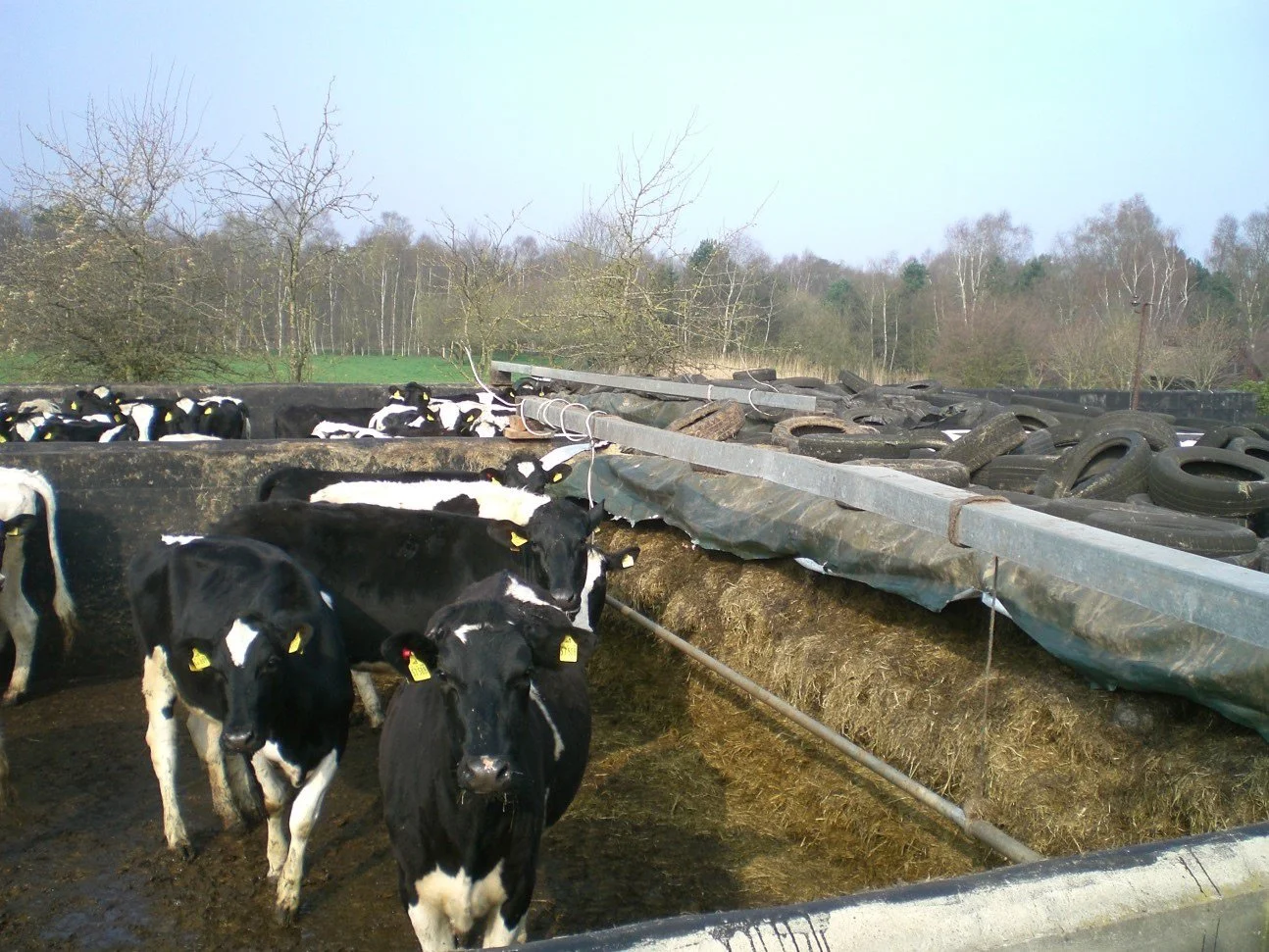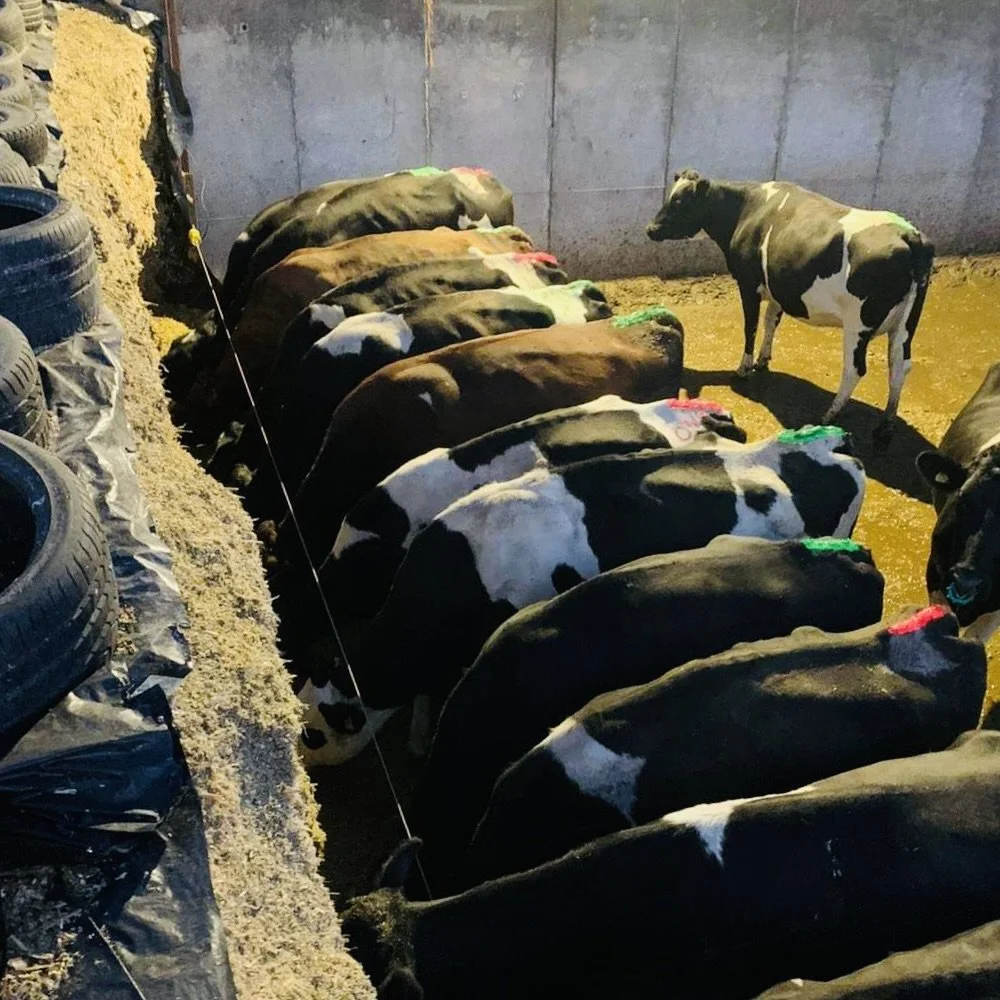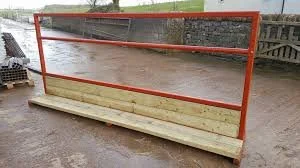Is self feed silage back in fashion?
One of the (very few) advantages of getting older is realising that most things come back around given enough time. So maybe not those platform shoes your dad had in the 70’s, but fashions have a habit of re-inventing themselves; and fashions come in all walks of life. Today the arable talk is all of zero till and direct drilling - again…. and so is it time for the self feed silage clamp to come back into fashion?
Self feeding Dairy Cows AHDB guide
What’s so good about self feeding cows?
For those with a lazy disposition, the idea of cows feeding themselves silage, and being milked by a robot, might be just nirvana. But, for most (real world) dairy farmers, the benefit of self feeding is all about saving costs. Costs in the shape of machinery and equipment, and perhaps labour too. If you don’t need to feed them, then you don’t need the feeder wagon, the tractor that drives it and maybe the loader that fills it - or perhaps the human who sits in the seat? Thats a fair amount of saving, or more accurately, potential saving that can be made. Assuming you already have the enterprise, will you really need one less tractor even if you do sell the feeder wagon? And are you really going to free up an entire wage packet if the girls get their own meals? Only you can do those sums, but before you grab the calculator, there are some other issues you need to consider and cost in.
Is self feeding silage a good idea?
Let’s be honest, you rarely get something for nothing and the savings you can get from self feeding are going to be off set (by some degree) with a reduction in output. The advocates might not agree with me here but I’ve yet to be convinced that cows fed a TMR will not produce more than those same cows self feeding. If you’re making good silage the chop length and consolidation will all be on point. Good silage is well compacted silage and this is not easy for cows to extract from the face so it’s very likely that the forage intake is reduced for self fed cows . Now that might be OK but in most cases the nutritionist will be trying to maximise the forage element of the diet because it’s the cheapest portion and self feed might just be counter productive here.
Does self feed silage increase waste?
The other issues with self feed can be waste. To minimise waste, you need to progress through the clamp at 2m per week and keep a nice tight silage face. A good shear grab is ok at this, a holstein jaw maybe not so much? And then there is the risk of slurry contamination, how often are you going to be able to scrape the clamps out to make sure that there isn’t any slurry contamination risk? Then there is rain spoiling - the advocates advice is to ensure the face doesn’t get wet from rainfall or they won’t eat it. So that’s going to need a roof then because I can’t see how else you can achieve this.
What do you need to make a clamp suitable for self feeding cows?
Clamp width is the first consideration, you need around 240mm per cow for grass silage as long as she has 24 hours to the face. So for a couple of hundred cows that’s 48m wide - almost 160 feet! If you can achieve that, you need the silage to be no more than 2m deep or the cows become untrained miners as they excavate under the silage they can’t reach. So for those 200 cows, eating 10t per head at 2m deep, we need a clamp only 28m long. These cows are only going to work through this at just over 1m per week so its not an ideal layout to minimise waste. It’s also not going to be cheap to build because a feed out clamp for this volume is going to have a footprint about a third smaller.
Keen on self feeding silage?
So you might get the impression that I’m not too keen on the whole self feeding thing, and I guess you wouldn’t be too far from the mark. But whilst not madly keen, I can see that it suits some systems. Mostly it suits the autumn block calving herds, that have chosen, or have been forced into a lower input lower output system. For these farms, self feed can be the best solution; so what do you need to do to make it work better? Get the clamp design and location optimal at the start, if it’s too far to walk cows are reluctant to make the trip. And keep the filled height to a maximum of 2m, if silage is any higher you will need to remove it and either place it at the foot of the face - the so called Easy Feed Silage System - or feed it elsewhere.
Lasagne silage might be a good idea too, layering the different cuts of grass and maize to make the forage accessible. Good hygiene is also vital so keep the face clean and the slurry away. It makes sense to fence off areas of clamp floor once cleared to cut down on the area you’re going to have to scrape every day. It’s also important to keep moving the fence back to avoid unintentional restriction of access. And whilst we are discussing the fence, most will choose an electric wire, hopefully set to the lowest voltage possible. Most will choose this, but I wouldn’t, I would recommend a moving heavy duty metal tube over an electric fence every day. I know it’s more expensive and more difficult to adjust, but cows are happy to lean on it and over it and they are never afraid of it. In my view electric fences have their place but that place shouldn’t be in front of the silage clamp because an electric fence is just an additional deterrent to forage intake.
So do the cost savings add up?
I can’t answer this without going through all the numbers. However I would be very surprised if self feed would work out cheaper if you are setting up a new silage clamp system from scratch. The increased costs of building the clamp alone will be difficult to justify, particularly if you include the cost of a building roof over it. The labour you save in loading feed wagons and pushing up silage are offset by the extra slurry scraping and tidying the silage face. And if you’re rearing young stock then you need to feed them too. So it’s not as straight forward as the headline savings might seem and sometimes things fall out of fashion for a reason.
If you want to discuss how to evaluate the potential savings by switching to self feed silage or to discuss any other topics covered in this series, then please contact me at jeremy@silageconsultant.co.uk



